Scaffolding
Scaffolding is a quick way to produce some major pieces of an application. For auto generating a set of models, views and controllers for a new resource in a single operation, scaffolding is used.
Scaffolding is a technique supported by MVC frameworks in which programmers can specify how application database may be used. The framework or compiler uses it together with pre-defined code templates to generate the final code that the application can use to perform CRUD in database entries, effectively treating the templates as a “scaffold” on which to build a more powerful application.
Scaffolding occurs at two different phases of the program lifecycle, design time and run time. Design time scaffolding produces files of code that can later be modified by the programmer. Run time scaffolding produces code on the fly. It allows changes to the design of the templates to be immediately reflected throughout the application.
Scaffolding on Rails
Scaffolding was made popular by the Rails framework.
When line scaffold :model_name is added to a controller, Rails will automatically generate all the appropriate data interfaces at run time.
An external command can also be used to generate Ruby code for the scaffold in advance, which is rails generate scaffold model_name. The generated script will produce files of Ruby code that application can use to interact with database.
As of Rails 2.0, dynamic scaffolding is no longer supported.
Nested Scaffold
Nested scaffold is the command that generates a set of perfectly working nested resource for Rails 4.2 and 5.
Features
- Generates a nested child resource with a single command
- Generates a beautifully working bunch of code
- Automatically generates appropriate model associations for ActiveRecord
- Haml ready
Syntax
To install nested scaffold, use the following command.
gem 'nested_scaffold' Creating a Resource
To generate a scaffold for the post resource, enter the following command:
rails generate scaffold Post name:string title:string content:text The scaffold generator will build several files in your application with some folders.
Following files will be created with scaffolding.
| File | Purpose |
|---|---|
| db/migrate/20100207214725_create_posts.rb | Creates the post table in your database |
| app/models/post.rb | The Post model |
| test/unit/post_test.rb | Unit testing harness for posts model |
| test/fixtures/posts.yml | Sample posts for use in testing |
| config/routes.rb | Edited to include routing information for posts |
| app/controllers/posts_controller.rb | The posts controller |
| app/views/posts/index.html.erb | A view to display index of all posts |
| app/views/posts/edit.html.erb | A view to edit an existing post |
| app/views/posts/show.html.erb | A view to display a single post |
| app/views/posts/new.html.erb | A view to create a new post |
| app/views/posts/_form.html.erb | A partial to control the overall look and feel of the form used in edit and new views |
| test/functional/post_controller_test.rb | Functional testing harness for posts controller |
| app/helpers/posts_helper.rb | Helper functions to be used from the post views |
| test/unit/helpers/posts_helper_test.rb | Unit testing harness for the posts helper |
| app/assets/javascripts/posts.js.coffee | Coffee script for post controller |
| app/assets/stylesheets/posts.css.scss | Cascading style sheet for post controller |
| app/assets/stylesheets/scaffolds.css.scss | Cascading style sheet to make scaffolded views look better |
Many experienced developers avoid scaffolding, instead prefer to write all or most of their source code from scratch. Because its automatically generated code may not fit into your application.
Scaffold Example
Let us generate following example with scaffold.
Step 1 Create an application
rails new example Step 2 In the example application, create MVC components.
cd example
rails generate scaffold post title:string body:text
rails generate scaffold comment post_id:integer body:textFrom the above code, first move to the application directory.
Step 3 Create database tables comments and post_id.
rake db:migrate Step 4 Use rake command to run migrations.
rake routes Step 5 Start the web server
rails server Output:
Run http://localhost:3000/posts in your browser.
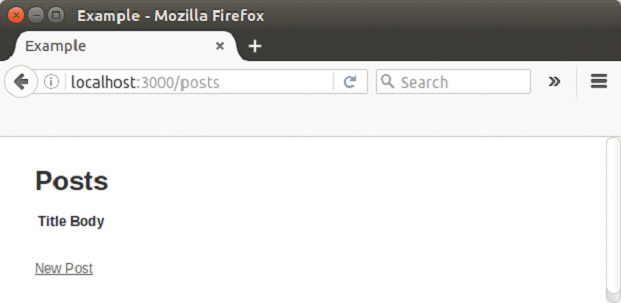
Go to New Post
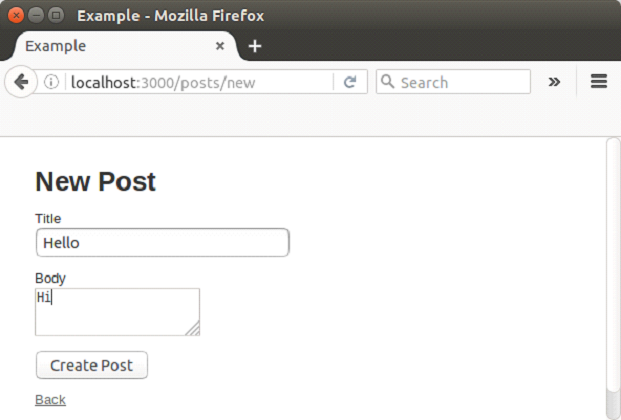
Click on Create.
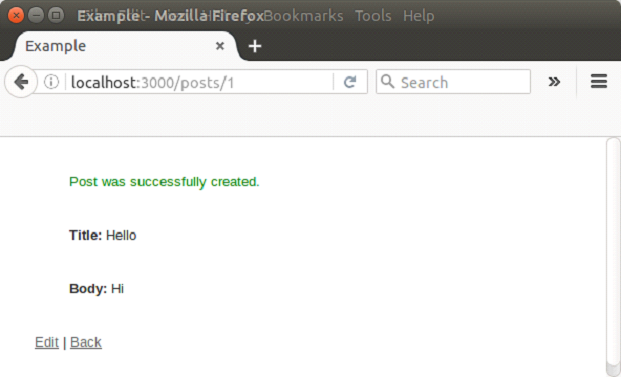
Click on Edit.
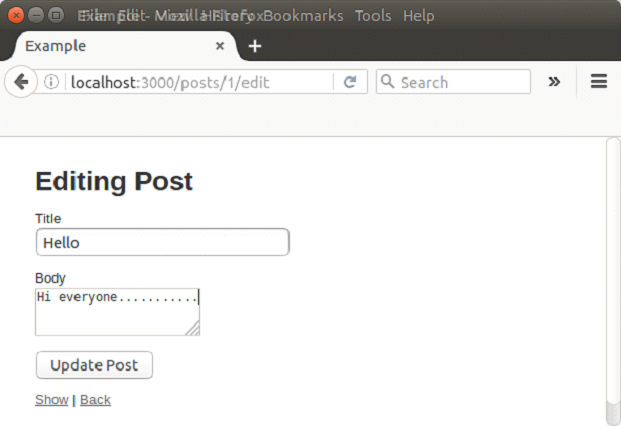
Click on Update.
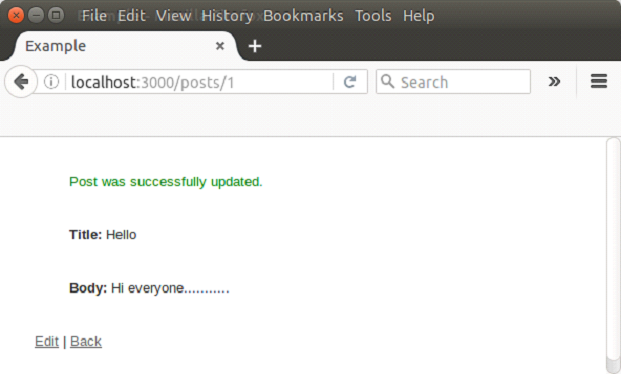
Leave a Reply